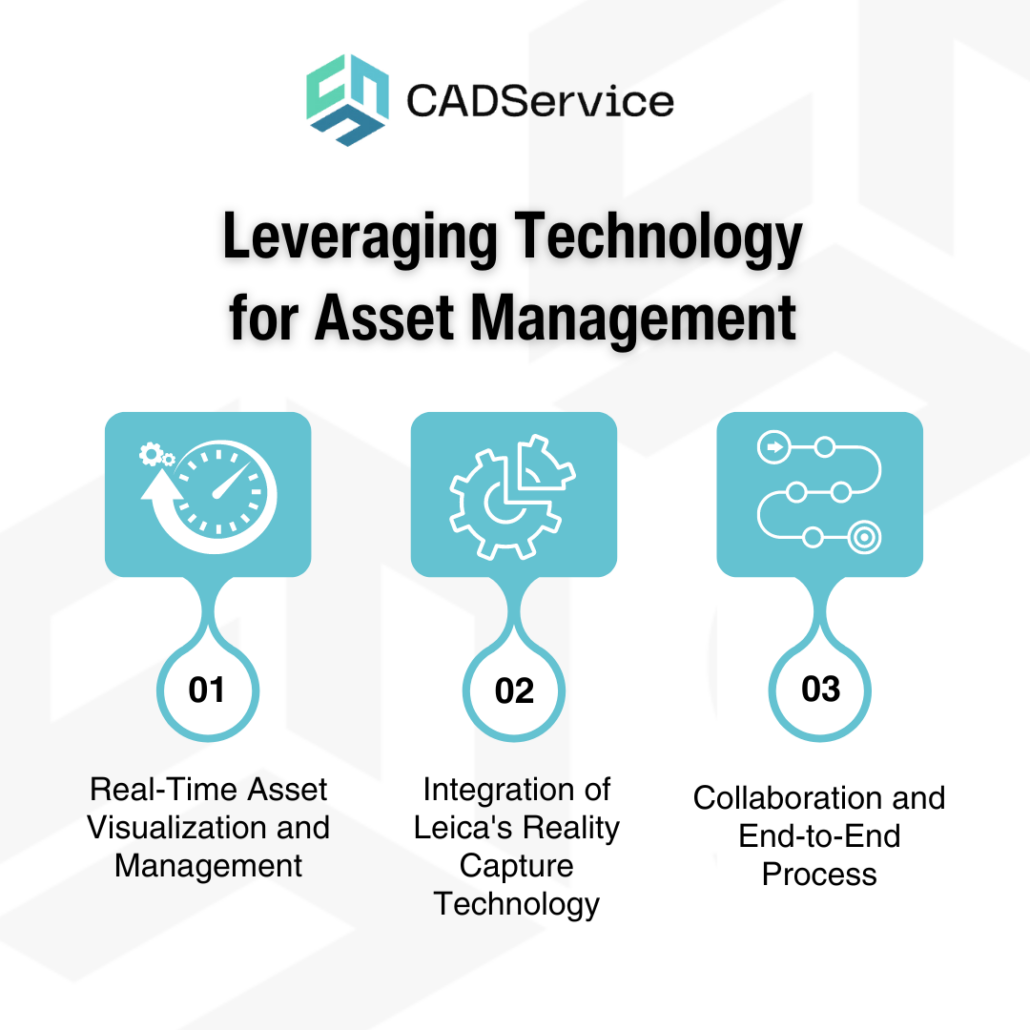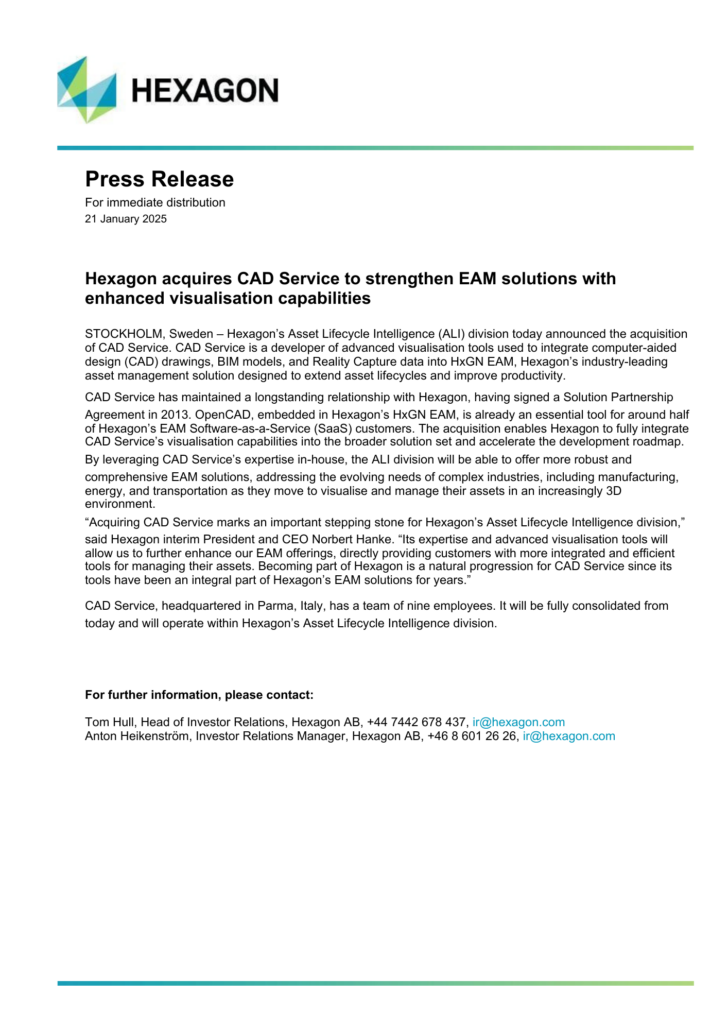Gen Z & Boomer Generational Differences at Work: What We Can Learn from Each Other? – CADTalks Episode 4
In CADTalks Episode 4, Andrea Carpi, CAD Service’s Chief Innovation Officer, and Chiara Delmonte, our Business Development & Strategy Manager, explore the timely topic of generational differences in the workplace – particularly focusing on the values and approaches of Gen Z and Baby Boomers.
This conversation isn’t just theoretical; it’s basically a practical dive into the real challenges and opportunities that arise when diverse generations collaborate.
Check out the 20-minute podcast episode for the full collection of insights!
Adapting to Change: Gen Z’s Strengths in a Fast-Paced World
We talked about Gen Z’s knack for change, attributing this to the fast-paced, tech-driven world they grew up in. Unlike previous generations, Gen Z was raised in an era where everything could shift with a quick click. This adaptability, according to Chiara, has fostered resilience and an openness to new ideas among younger employees, allowing them to respond quickly to shifting demands and opportunities.
Andrea noted that this resilience could be a game-changer for organizations aiming to stay agile. However, he also cautions that change for change’s sake can risk destabilizing the balance within a team. This is where Baby Boomers can play a pivotal role.
Stability and Focus: The Value of Boomer Wisdom
For Baby Boomers, stability and focus are central tenets in their approach to work. With decades of experience, they bring structure and discipline to the table, which often complements Gen Z’s drive for innovation. Boomers have honed their expertise over the years and can provide a consistent framework within which new ideas can flourish.
Building Bridges: The Importance of Mentorship
To bridge the generational divide, mentorship programs could connect younger employees with more seasoned ones. Pairing Gen Z team members with Baby Boomer mentors can foster mutual learning and respect. Our hosts emphasized that mentorship should evolve into a peer-to-peer relationship, where both parties contribute equally, creating a space where knowledge flows both ways.
Moving Forward: Embracing Generational Diversity
Fostering a balanced, inclusive workplace requires a thoughtful approach to generational differences. With Gen Z’s adaptability and Boomers’ steadfastness, workplaces can benefit from a diversity of perspectives that strengthens the team as a whole.
So, if you’re curious about how to foster collaboration across generations, this episode of CADTalks offers invaluable insights into building a more cohesive, balanced, and future-oriented workplace.
And if you’d like to foster a workplace that bridges generational gaps, tune into CADTalks for the full conversation!
You can also listen to the previous episodes here:
Industrial Applications of Augmented Reality: Insights from CADTalks Episode 3
In the latest, special edition to our previous episode of CADTalks, Andrea Carpi, CAD Service’s Chief Innovation Officer, and Chiara Delmonte, our Business Development & Strategy Manager, take listeners on a fascinating journey into the world of augmented reality with Microsoft’s HoloLens 2.
Known for its potential in transforming manufacturing and industrial applications, the HoloLens 2 opens up new avenues for training, safety, and asset management. Andrea Carpi and Chiara Delmonte dig deep into the differences between augmented and virtual reality, showcasing how each technology can redefine industry-specific solutions.
Tune in to CADTalks Episode 3 and experience the future of industrial operations today!
From Virtual Reality to Augmented Reality: HoloLens 2 in Focus
Starting the episode, Andrea Carpi and Chiara Delmonte compared the immersive qualities of VR, specifically the Oculus Quest, to the dynamic world of AR as seen in HoloLens 2. While VR fully immerses users in a virtual environment, AR overlays digital information onto the real world, offering a “layered” experience that enhances, rather than replaces, reality. This distinct approach is especially powerful in industrial settings where maintaining awareness of one’s surroundings is paramount.
HoloLens 2 provides the ability to interact with holograms through simple hand gestures – no controllers needed. This hands-free interaction makes it ideal for fieldwork, where technicians can overlay real-time data onto their immediate environment and receive guided instructions without interrupting workflow.
Enhanced Training Experiences with HoloLens 2
One standout feature of the HoloLens 2, as discussed by Andrea and Chiara, is its value in hands-on training scenarios. For example, by integrating AR into training, companies can simulate real-life procedures, from operating machinery to navigating high-risk zones, all while employees remain safely on the training floor. With HoloLens 2, users can practice tasks in a life-like, controlled environment, making errors without real-world consequences – a game-changer in sectors where safety is crucial.
Practical Uses for HoloLens 2 in Industrial Environments
Beyond training, the HoloLens 2’s practical applications for on-site industrial use are expansive. As Andrea Carpi mentioned, AR’s ability to highlight operational data – such as flashing asset indicators or temperature warnings – allows technicians to respond swiftly to issues, maintaining efficiency and safety without unnecessary disruptions. For maintenance engineers or field technicians, this tool could enable seamless navigation and immediate access to asset data, helping them identify and address problems on the spot.
HoloLens 2 can overlay information about assets and infrastructure, improving operational planning and giving field workers enhanced visibility. Imagine walking through a factory and seeing digital annotations on machinery that detail its maintenance status or flag any safety concerns.
Why Choose CAD Service for Your AR Solutions?
Our team is dedicated to researching, testing, and implementing AR solutions that bring immediate value to our clients.
So, if you’re interested in exploring AR’s potential in your industry, feel free to consult our expertise in asset visualization and industry-specific solutions ensures you’ll be equipped with the latest technology for a smarter, safer future.
Make sure you listen to the episode for all insights and if you’d like to explore the potential of augmented reality for your business, connect with us to discover innovative, efficient solutions today!
You can also listen to the first two episodes here:
CADTalks: Virtual Reality and the Future of Asset Management part 2
In our previous blog post, we delved into the insightful discussion from the first half of our recent CADTalks episode, where Chiara Delmonte and Andrea Carpi explored the transformative potential of Virtual Reality (VR) in asset-heavy industries.
They discussed how VR can enhance training, improve design processes, and facilitate better decision-making.
In this follow-up, we’ll cover the highlights from the second half of the episode, focusing on practical demonstrations and real-world applications of VR technology in industrial settings.
Immersive VR Experiences for Training and Simulation
During the second half of the CADTalks episode, Chiara Delmonte and Andrea Carpi provided a hands-on demonstration of VR technology, showcasing its capabilities for immersive training and simulation. Andrea Carpi guided Chiara Delmonte through various VR scenarios, illustrating how VR headsets can be used to simulate real-world environments and tasks.
This interactive experience highlighted the precision and control that VR offers, making it an invaluable tool for training maintenance engineers, conducting virtual inspections, and performing simulations.
Andrea Carpi demonstrated the versatility of VR by explaining how it can be used for virtual tours and training sessions. For instance, maintenance engineers can be trained in a virtual environment, where they can practice operations without the risks associated with on-site training. This approach not only enhances safety but also ensures that engineers are well-prepared for real-world tasks.
Enhancing Knowledge Retention with VR
One of the critical points discussed was the role of VR in addressing knowledge retention issues. As the workforce evolves and experienced employees retire, companies face the challenge of preserving valuable knowledge.
VR offers a solution by capturing and storing this knowledge in an interactive format that can be accessed indefinitely. This ensures that new employees can learn from the expertise of their predecessors, maintaining a high level of competency within the organization.
Chiara Delmonte emphasized how VR can be a game-changer in preserving institutional knowledge. By creating virtual training modules and simulations, companies can ensure that crucial skills and procedures are documented and passed down seamlessly to new hires. This not only aids in knowledge retention but also accelerates the onboarding process for new employees.
Practical Applications and Future Prospects
Andrea Carpi and Chiara Delmonte also discussed the practical applications of VR in various industrial sectors. They highlighted its potential for virtual inspections, where engineers can remotely assess the condition of equipment and infrastructure. This capability is particularly useful in hazardous environments or locations that are difficult to access.
Furthermore, Andrea Carpi mentioned the cost-effectiveness of VR technology, noting that companies don’t need to invest in the latest models to reap its benefits. Even with standard VR headsets, businesses can create highly effective training programs and simulations.
The conversation concluded with a teaser for the next episode, where they plan to explore the capabilities of HoloLens, another cutting-edge technology in the field of augmented and virtual reality. This upcoming discussion promises to provide further insights into how these technologies can be integrated to enhance industrial operations.
Leveraging Virtual Reality in Industrial Applications
Ultimately, we believe in harnessing the power of innovative technologies like VR to drive industrial advancements.
The discussions in CADTalks highlight how VR can redefine training, improve knowledge retention, and enhance operational efficiency. Companies can truly stay ahead of the curve and maintain a competitive edge by integrating these technologies.
For more information on how VR and other advanced technologies can benefit your business, contact us, and let’s discuss how we can transform your operations and achieve new levels of efficiency and innovation.
CADTalks: Virtual Reality and the Future of Asset Management part 1
In the latest episode of CADTalks, Chiara Delmonte, our Business Development & Strategy Manager, and Andrea Carpi, our Chief Innovation Officer, dive deep into the transformative potential of Virtual Reality in the manufacturing sector, focusing on industrial applications.
This engaging discussion highlights the innovative possibilities that VR brings to the industrial sector, from immersive training programs to enhanced design visualization.
Exploring VR Technology: A Hands-On Experience
Andrea Carpi kicked off the episode by introducing one of the latest and best-performing tech in VR devices, the Oculus Quest 2 (and he also teased that they would try out Microsoft HoloLens 2 in the next episode!). Such a cutting-edge VR tool offers unprecedented immersive experiences that can be leveraged in various industrial contexts.
Andrea Carpi’s excitement was palpable as he guided Chiara Delmonte through her first VR experience. Chiara Delmonte’s reaction, filled with awe and curiosity, mirrored what many first-time users feel when they encounter the immersive world of VR.
This live demonstration showcased the potential of VR to create engaging and interactive environments that can revolutionize training and operational procedures.
The Benefits of VR in Industrial Training
One of the key points discussed was the application of VR in industrial training. Traditional training methods can be costly and time-consuming.
However, VR offers a compelling alternative by creating realistic, immersive training scenarios that can be accessed anytime and anywhere. This flexibility not only reduces training costs but also enhances the effectiveness of the training itself.
By using VR, employees can practice operating complex machinery or navigating hazardous environments in a safe and controlled setting. This hands-on experience is invaluable in building confidence and competence without the risk of real-world consequences.
Enhancing Design and Visualization with VR
Another significant advantage of VR highlighted in the podcast is its capability to enhance design and visualization processes. VR allows designers and engineers to create and interact with three-dimensional models, providing a more comprehensive understanding of a project’s spatial dynamics. As such, this immersive visualization helps in identifying potential design flaws and making informed decisions early in the development process.
Chiara Delmonte’s experience with the VR headset demonstrated the power of this technology in bringing designs to life. She could virtually walk through a project, experiencing it in real-time, which is a significant leap from traditional two-dimensional blueprints or CAD models.
Ultimately, this capability can streamline the design process, reduce errors, and ultimately lead to more innovative and efficient project outcomes.
Addressing Potential Drawbacks and Challenges
While VR technology offers numerous benefits, Andrea Carpi and Chiara Delmonte also discussed some potential challenges. One notable drawback is the risk of motion sickness, especially with prolonged use. This issue can be mitigated with advancements in VR technology and by designing applications that are mindful of user comfort.
Moreover, the immersive nature of VR can lead to social isolation if not managed properly. It’s essential to balance VR usage with real-world interactions to ensure that users do not become overly dependent on virtual experiences.
What’s in Store for Virtual Reality in Industrial Use?
The episode provided valuable insights into the transformative potential of VR in the industrial sector. From enhancing training programs to improving design and visualization, VR is poised to revolutionize the way we work and interact with technology.
As we are committed to exploring and harnessing the latest technological advancements to provide our clients with innovative solutions, we are very enthusiastic about using the power of VR to innovate and help you excel in your industrial operations.
If this piqued your interest, stay tuned for more exciting updates from CADTalks, and continue reading the second half of our CADTalks Insights!
Are you interested in learning how VR can revolutionize your industrial operations? Contact us today to explore how our innovative solutions can help you stay ahead of the curve.
A Model of Interdivisional Collaboration – The HxGN EAM Reality Viewer Success Story
These days, collaboration is a necessity for driving innovation and adding value across different divisions of an organization.
The ability to harness the power of collaboration can significantly enhance operational efficiency and productivity, as demonstrated by the successful partnership between HxGN ALI, Leica Geosystems, and CAD Service. This partnership has culminated in the HxGN EAM Reality Viewer, a groundbreaking tool that merges reality capture technology with advanced asset management capabilities.
The Power of Collaboration
During the recent Iberian Partner Day in Barcelona, the synergy between HxGN ALI, Leica Geosystems, and CAD Service was showcased through the HxGN EAM Visualization Studio. This event marked the first joint presentation by Tobias Pforr from Leica and the CAD Service team, highlighting the immense potential of the HxGN EAM Reality Viewer.
The HxGN EAM Reality Viewer, part of HxGN EAM 12.1.1, integrates scans acquired through Leica’s cutting-edge hardware. This module exemplifies how cross-divisional collaboration can lead to innovative solutions that simplify and enhance asset management processes. The collaboration extends beyond product design and development, demonstrating a unified approach to solving complex challenges in asset management.
Leveraging Technology for Asset Management
The key to successful asset management lies in the ability to visualize and manage assets in real time. The HxGN EAM Reality Viewer leverages Leica’s reality capture technology, allowing users to integrate detailed scans directly into the HxGN EAM system. This integration provides a comprehensive view of assets, enabling better decision-making and more efficient management.
By harnessing the power of collaboration, CAD Service and Leica have created a tool that not only enhances the attractiveness and value of HxGN EAM but also sets a new standard for asset management solutions. The end-to-end process, from acquiring scans to managing them within the HxGN EAM system, showcases the seamless integration of technology and expertise from different divisions.

A Success Story from Barcelona
The joint presentation at the Iberian Partner Day was a testament to the power of collaboration. Tobias Pforr’s detailed explanation of the scanning process, combined with the CAD Service team’s demonstration of the Reality Viewer, captivated the audience. The positive reception underscored the value of interdivisional work and the potential for future collaborations.
At CAD Service, our mission is to enhance asset management solutions by integrating various HxGN technologies. This partnership with Leica Geosystems highlights our commitment to innovation and excellence. Together, we are paving the way for a more interconnected and efficient future.
The Future of Asset Management
The success of the HxGN EAM Reality Viewer is just the beginning. The collaboration between HxGN ALI, Leica Geosystems, and CAD Service sets the stage for future innovations that will continue to drive value across different industries. By leveraging the strengths of each division, we can create solutions that are not only effective but also transformative.
Trust, human connection, sincerity, and passion are the foundations of great relationships, both in business and beyond. The collaboration between HxGN ALI, Leica Geosystems, and CAD Service is a prime example of how these values can lead to successful outcomes. We are incredibly inspired and motivated by the workshop in Barcelona and look forward to future collaborations.
Conclusion
In conclusion, the partnership between HxGN ALI, Leica Geosystems, and CAD Service demonstrates the immense potential of harnessing the power of collaboration. By integrating advanced technologies and expertise from different divisions, we have created a solution that redefines asset management. The HxGN EAM Reality Viewer is a testament to the innovative and interconnected future we are building together.
We are committed to delivering cutting-edge software solutions in visualized asset management. Our core values of innovation, quality, and customer care are evident in every solution we develop, ensuring real value for our clients’ operations.
Our Partnership with Hexagon – Driving Innovation in Asset Management Visualization
Our long-standing partnership with Hexagon Asset Lifecycle Intelligence represents a journey of continuous innovation and advancement in asset management technologies. This collaboration is more than just a business relationship; it’s a shared commitment to developing next-generation solutions that revolutionize the way organizations manage their assets.
A Journey of Innovation
For years, we have worked alongside Hexagon to push the boundaries of what is possible in asset management. Our collaboration has enabled us to integrate cutting-edge visualization technologies into HxGN EAM, providing clients with unparalleled tools to optimize asset efficiency. As a Hexagon Technology Partner, we are part of a vibrant community dedicated to leveraging our combined expertise to address the complex challenges of asset performance.
Leveraging Expertise
Our partnership is built on over 30 years of experience in the industry. Together, we harness the power of HxGN EAM, an industry-leading enterprise asset management solution designed to optimize asset efficiency and tackle performance challenges head-on. This robust platform allows us to provide comprehensive solutions that enhance operational efficiency and deliver tangible results for our clients.
Fostering Collaboration in Asset Management Visualization
At the heart of our partnership with Hexagon is a commitment to fostering an ecosystem of collaboration. We believe that by working together, we can drive growth and innovation in the industry. This collaborative approach has led to the development of technology suites that are not only aesthetically pleasing but also supremely functional and user-friendly.
The network of HxGN skilled partners is dedicated to delivering cutting-edge solutions that keep EAM users ahead of the curve. Through our combined efforts, we are reshaping the industry landscape, providing state-of-the-art asset visualization, services, support, and training.
Looking Ahead
Our partnership with Hexagon continues to evolve, with new advancements and innovations on the horizon. We are excited to explore future opportunities to enhance our solutions and deliver even greater value to our clients. By staying at the forefront of technology, we aim to set new standards in asset management and visualization.
We remain committed to innovating and delivering software solutions that transform asset management. Our core values of innovation, quality, and customer care drive us to provide real value for our clients’ operations.
Join us as we continue this journey of innovation and collaboration. Together with Hexagon, we are driving the future of asset management, providing the tools and expertise needed to tackle today’s challenges and seize tomorrow’s opportunities.
CADTalks: Asset Management and Metaverse
CADTalks’s first episode on Asset Management and Metaverse is available now!
In this episode, we talk about how the metaverse is transforming asset management. Join our experts as they discuss how Augmented Reality (AR) and Virtual Reality (VR) are changing the way we visualize and interact with assets, the creation and use of digital twins for enhanced monitoring and management, as well as the revolutionary impact of drones on data collection and asset inspection.
Tune in and discover how these innovations are shaping the future of asset management.
Watch the first episode now!
CADTALKS is Here! 1st Episode on Metaverse and Asset Management
Let us welcome you to the CAD Service Podcast Series, CADTALKS where we discuss the latest trends, technologies, and strategies shaping the future of asset management. In our first episode, we’ll explore the intersection of the metaverse and asset management, uncovering how virtual and augmented reality, digital twins, and IoT redefine the industry.
And in our upcoming podcast episode, we’re exploring real-world applications, case studies, and expert insights.
So, mark your calendars, and join us as we uncover the transformative role these technologies play in optimizing asset performance and driving business growth in the realm of enterprise asset management.
Metaverse and Asset Management
In a nutshell, the metaverse represents a new frontier for asset management. Utilizing the power of virtual and augmented reality (AR/VR), businesses can optimize asset tracking, maintenance, and operations in ways never before possible. From immersive training simulations to remote equipment monitoring, AR and VR technologies offer exquisite insights and efficiencies.
Augmented Reality and Virtual Reality
Integrating AR and VR into asset management processes can deliver three key benefits:
- Enhanced visualization
- Improved training and maintenance procedures
- Streamlined operations
By overlaying digital information onto the physical environment, technicians can access real-time data and instructions, leading to faster problem-solving and reduced downtime.
Digital Twins
Moreover, the importance of digital twins in optimizing asset performance is ever on the rise.
Digital twins are virtual replicas of physical assets, continuously updated with real-time data from IoT sensors. Simulating various scenarios and predicting potential issues, digital twins enable proactive maintenance and decision-making, ultimately maximizing asset uptime and efficiency.
Internet-of-Things
Last but not least, we will talk about the role of IoT in asset management, particularly in collecting and analyzing data from connected devices. IoT sensors embedded within assets can monitor performance metrics in real-time, providing valuable insights into equipment health and utilization.
With IoT-enabled asset management solutions, businesses can identify trends, optimize workflows, and prevent costly downtime.
Hope you are ready to explore the metaverse and transform your asset management practices! If so, then tune in to our podcast first episode to learn more about these technologies – as well as how CAD Service’s innovative solutions and strategies affect them.
Let’s build a visualized future together
Reach out to us for inquiries about our EAM and BIM solutions, partnership opportunities, or if you’re interested in joining our innovative team at CAD Service.
Contact
+39 0521 983250
01676180340
Via Lanfranco Giovanni, 43126 Parma PR, Italy


